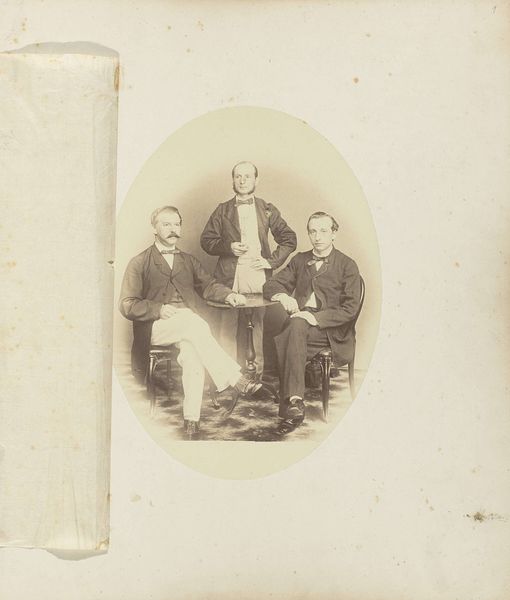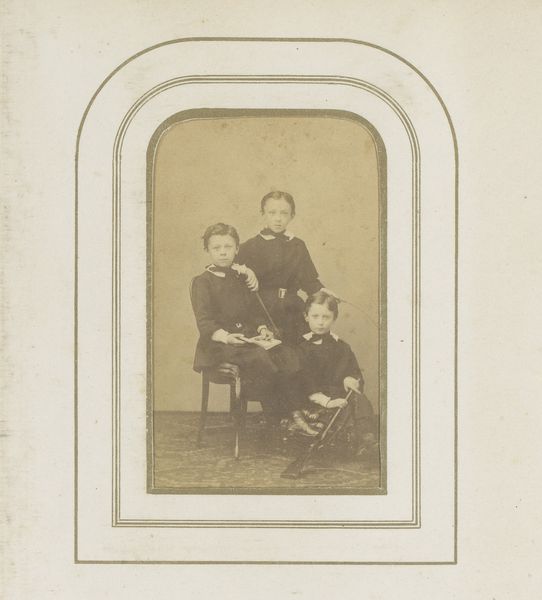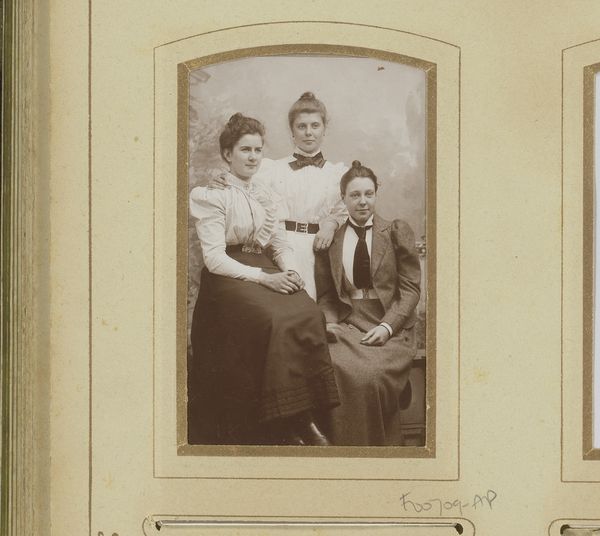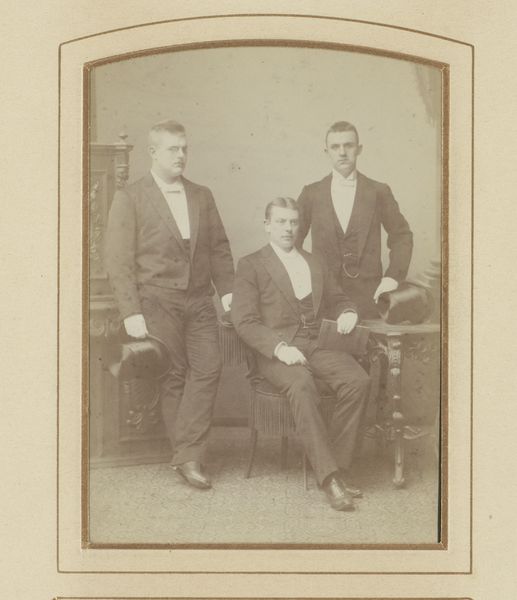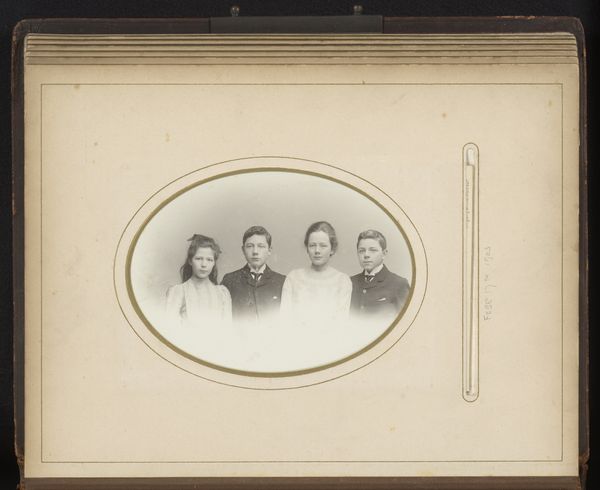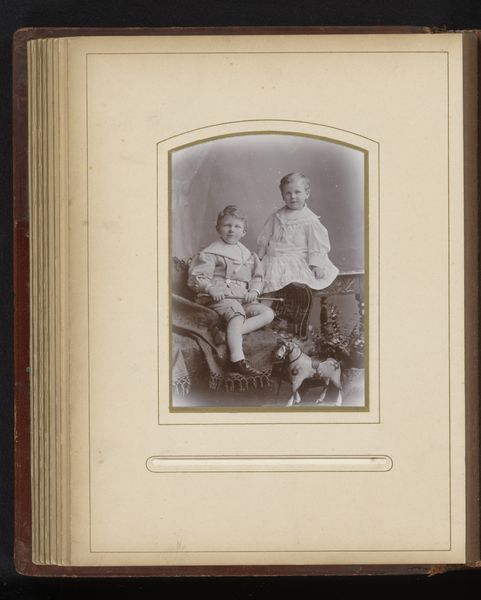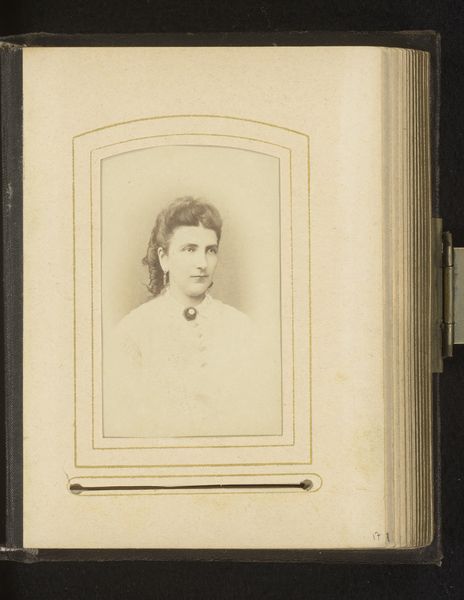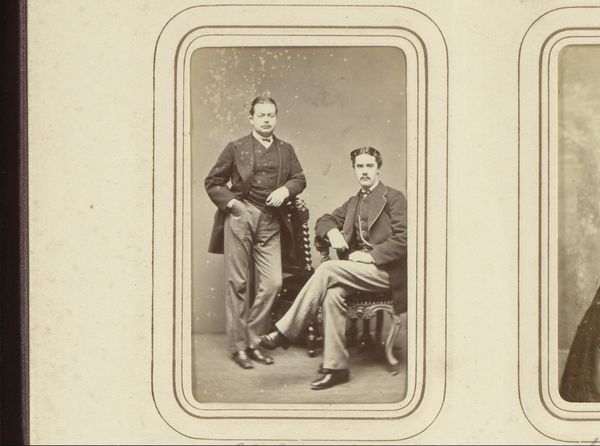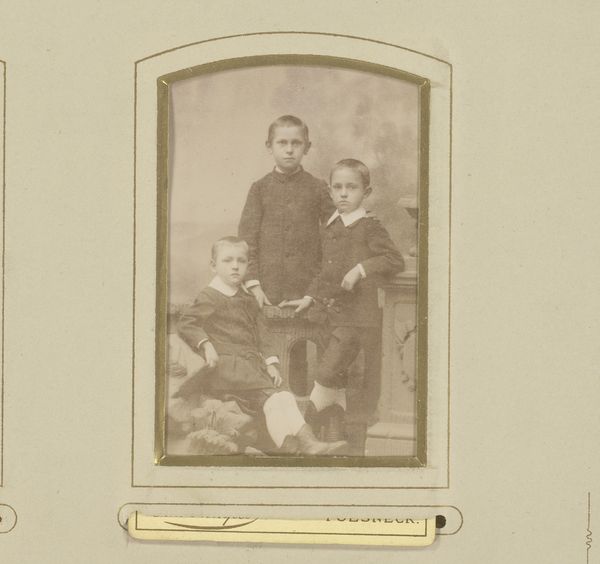
photography, gelatin-silver-print
#
portrait
#
photography
#
gelatin-silver-print
#
realism
Dimensions: height 101 mm, width 63 mm
Copyright: Rijks Museum: Open Domain
Editor: Here we have Jan George Mulder’s "Portrait of three young men in white clothing," a gelatin-silver print likely made between 1865 and 1887. There’s something striking about the composition—a real formality, but also a certain relaxed intimacy. What catches your eye, looking at this work? Curator: Immediately, I’m drawn to the color white. The white clothing isn't merely fabric; it functions as a powerful signifier. Historically, white represents purity, innocence, even cleanliness, ideas ingrained within the cultural consciousness of that time. Yet, what could it suggest in the context of three young men? Do you think it alludes to their social status or perhaps something more nuanced? Editor: That’s an interesting angle. Perhaps it speaks to an aspiration or a constructed image of respectability. Do you see any visual clues suggesting anything else? Curator: Indeed. Note the way they are arranged, almost as a triangle with the standing man at the apex. The triangle itself, across various cultures, is linked to stability, hierarchy, or even divine power. Is Mulder subtly imbuing these young men with a certain authority or destined trajectory? The lack of direct eye contact with the viewer adds another layer of symbolic remove. Editor: It’s amazing how much symbolism can be embedded in what seems like a simple portrait. I definitely see those layers now. Thanks! Curator: My pleasure! It's fascinating how photography can freeze not just an image, but a whole constellation of cultural values and subconscious meanings.
Comments
No comments
Be the first to comment and join the conversation on the ultimate creative platform.


